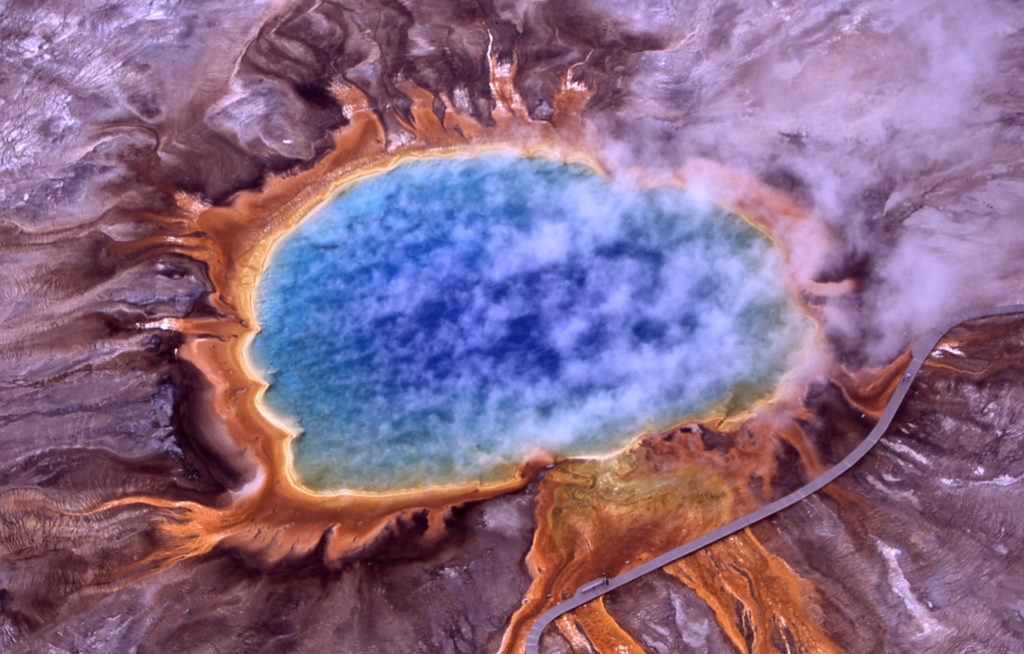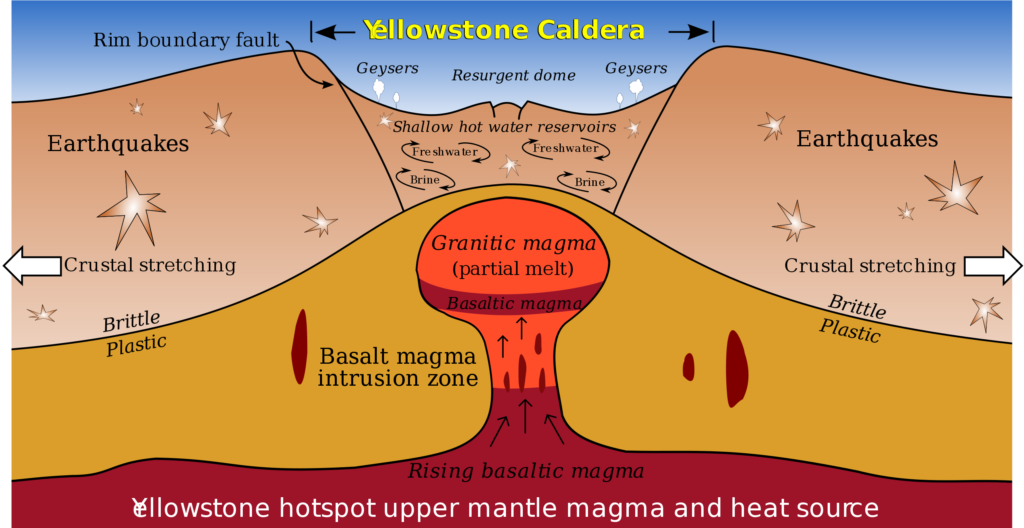
USGS scientists say June was an unusually active month for earthquakes at the famed Yellowstone supervolcano, but add there’s nothing too concerning about the seismic activity there. However, they add that “Yellowstone activity is currently above background levels.”
In their June activity summary just published USGS shared that Yellowstone experienced 445 earthquakes during the month, even though only a hundred or two is considered normal monthly activity. “While above average for a month, this is by no means unprecedented” wrote the USGS in the Yellowstone Volcano Observatory Monthly Update. Scientists there cited an exceptionally busy June 2017 where more than 1,100 earthquakes struck the region.
Much of the June 2021 activity was anchored around four earthquake swarms that struck during the second half of the month. A swarm of 152 earthquakes northeast of West Yellowstone, Montana began on June 19; a swarm of 153 earthquakes struck 10 miles north-northeast of Old Faithful in Yellowstone National Park. A third swarm consisting of 52 earthquakes began on June 22, roughly 7 miles north of West Yellowstone. A fourth swarm struck also near 7 miles north of West Yellowstone, where 18 earthquakes struck beginning on June 22.
“Earthquake sequences like these are common and account for roughly 50% of the total seismicity in the Yellowstone region,” the USGS wrote.

Located within Yellowstone National Park in the northwest corner of Wyoming, Yellowstone Caldera, also known as the Yellowstone Supervolcano, is an active volcanic caldera. The site was home to three massive super-eruptions over the last 2.1 million years; the last was 630,000 years ago, the second 1.3 million years ago, and the oldest was 2.1 million years ago. That oldest earthquake was the largest and produced 2,500x more ash than the 1980’s Mount St. Helen’s eruption.
The volcanic eruptions, as well as the continuing geothermal activity at the national park’s famous geysers, are a result of a substantial plume of magma located below the caldera’s surface. The magma in this plume contains gases that are kept dissolved by the immense pressure under which the magma is contained. If the pressure is released to a sufficient degree by some geological shift, then some of the gases bubble out and cause the magma to expand. This can cause a chain reaction: if the expansion results in further relief of pressure, for example, by blowing crust material off the top of the chamber, the result is a very large gas explosion.
While another eruption at Yellowstone is inevitable, it isn’t likely to happen anytime soon. A 2017 study by Arizona State University determined that it would take “decades” for Yellowstone’s magma reservoir to reach capacity that would generate an eruption.
Comments
"activity" - Google News
July 04, 2021 at 03:17PM
https://ift.tt/2TqRCzz
Earthquake Activity Up 4x Above Normal at Yellowstone - Weatherboy
"activity" - Google News
https://ift.tt/3ddCXMh
https://ift.tt/2WkO13c
Bagikan Berita Ini














0 Response to "Earthquake Activity Up 4x Above Normal at Yellowstone - Weatherboy"
Post a Comment